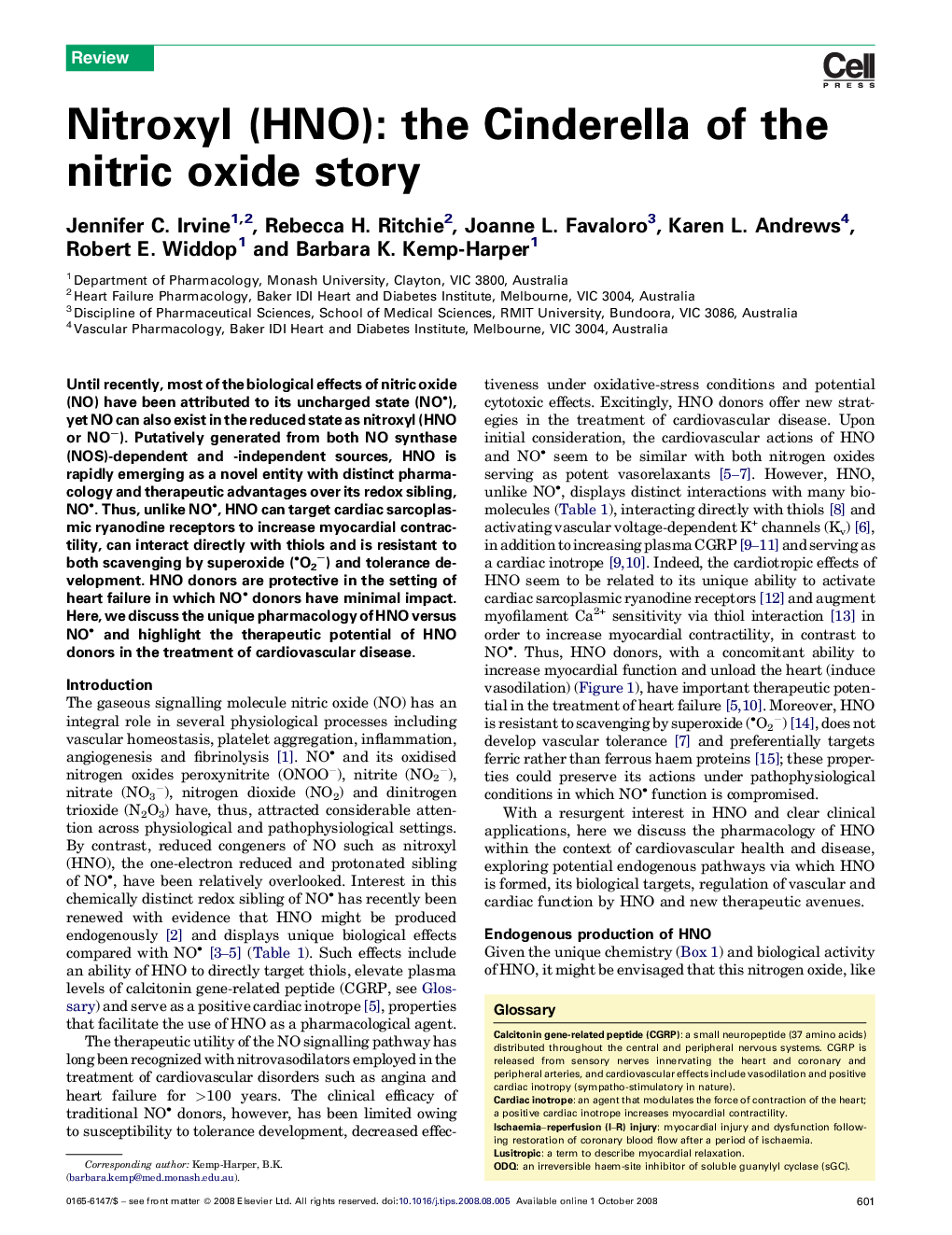| Article ID | Journal | Published Year | Pages | File Type |
|---|---|---|---|---|
| 2573310 | Trends in Pharmacological Sciences | 2008 | 8 Pages |
Until recently, most of the biological effects of nitric oxide (NO) have been attributed to its uncharged state (NO), yet NO can also exist in the reduced state as nitroxyl (HNO or NO−). Putatively generated from both NO synthase (NOS)-dependent and -independent sources, HNO is rapidly emerging as a novel entity with distinct pharmacology and therapeutic advantages over its redox sibling, NO. Thus, unlike NO, HNO can target cardiac sarcoplasmic ryanodine receptors to increase myocardial contractility, can interact directly with thiols and is resistant to both scavenging by superoxide (O2−) and tolerance development. HNO donors are protective in the setting of heart failure in which NO donors have minimal impact. Here, we discuss the unique pharmacology of HNO versus NO and highlight the therapeutic potential of HNO donors in the treatment of cardiovascular disease.
